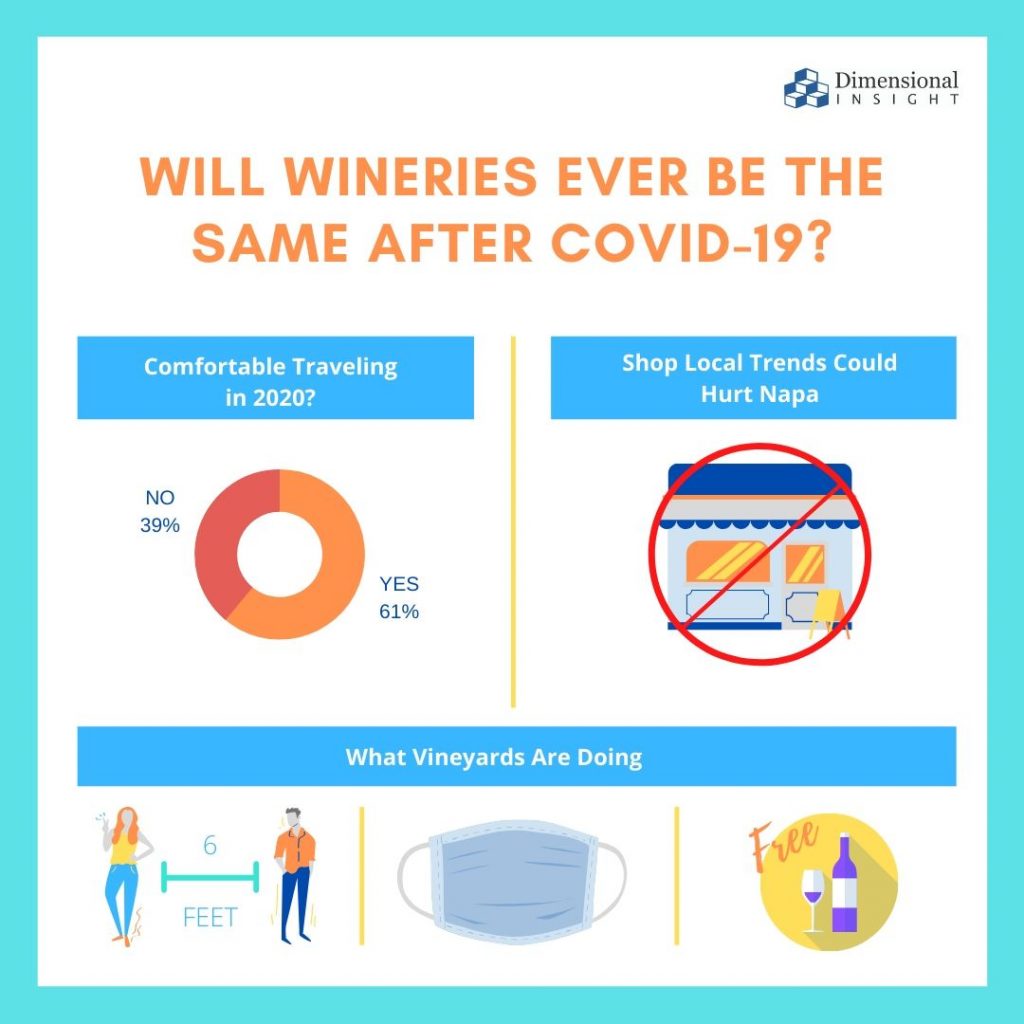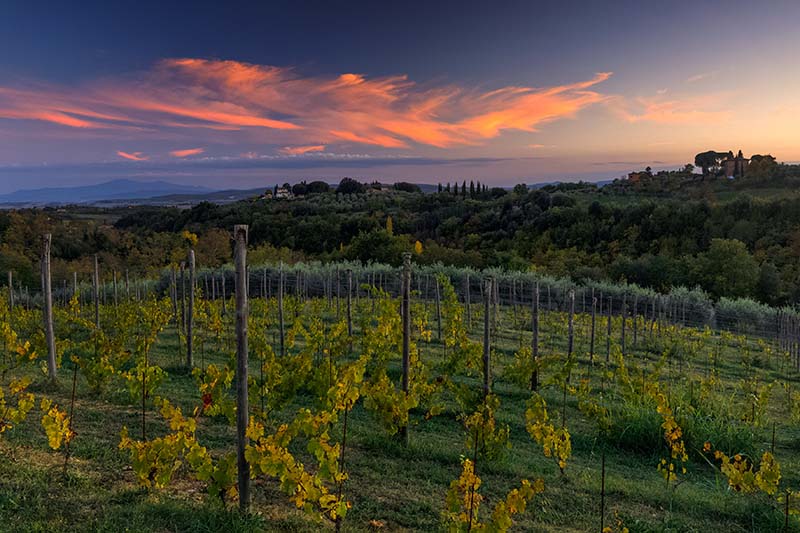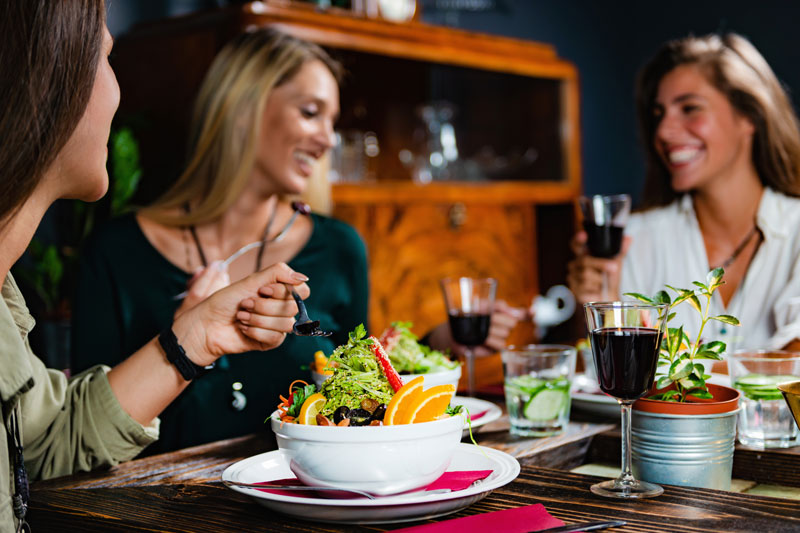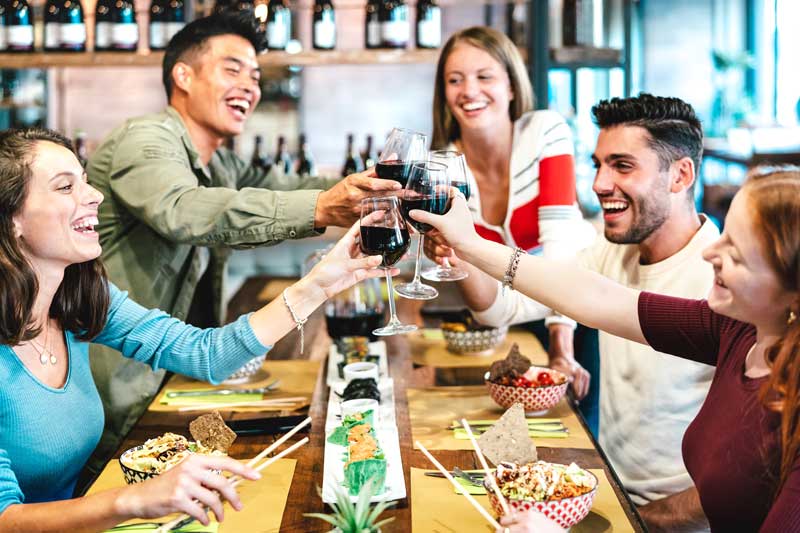The COVID-19 pandemic has changed the way people work, live, travel, and drink.
All 50 states have started to ease restrictions and stay-at-home orders, but the pandemic may affect the luxury wine industry for years to come. Napa Valley vineyards began opening in early June, but things will look different with social distancing measures in place and likely only local visitors.
Most wineries will now require employees and guests to wear masks, and visitors will need to make reservations. With restrictions and fear of travel, is enotourism dead?
Won’t travel for wine
Because of the enclosed nature of an airplane and how difficult it is to socially distance from other passengers, only 16% of U.S. adults said they would be willing to travel on a commercial airliner on the first day after officials lifted all travel restrictions, according to Forbes.
The first day back may only be for the bravest travelers, but only 61% of Americans said they would be comfortable flying any time in the next six months, which means summer vacation is likely canceled.
In America’s most prominent wine region, Napa Valley wineries were closed for nearly three months. When all vineyards are reopen, they will be limiting guests, which means the total number of visitors will plummet in 2020, as will total revenue.
In 2018, Napa Valley hosted 3.8 million visitors, according to Visit Napa Valley. 2019’s data has not been released yet. The good news for the Valley is that day-trippers accounted for the most significant proportion of visitors at 62.3%. Lodging guests counted for 30% of visitors. And 80% of all visitors were from the United States.
“There’s no question that this moment marks an important inflection point for California wine. The forecast for the business was already looking gloomy before COVID-19 arrived: Last year, for the first time in 25 years, American wine consumption didn’t grow,” Esther Mobley wrote in the San Francisco Chronicle.
Mobley went on to write, “we anticipate that virtually all wineries, especially smaller wineries, will see slowing sales this year, and so I have to imagine that the oversupply problem will worsen, even if 2020 were to shape up to be a short crop.”
“Shop Local” trends could hurt Napa
Campaigns to encourage consumers to “shop local” or “shop small” have been prominent for years. As businesses were forced to close their doors to the public during the pandemic’s onset, shop local rose to a new high. Consumers wanted to support their communities, weren’t able to travel far, and became hesitant to receive packages.
Local wineries such as Fox Hollow Vineyards in Holmdel, New Jersey, created chocolate and wine pairings for Mother’s Day for customers to get via curbside pick-up or delivery. Wolffer’s Vineyard in Sagaponack, New York promoted its “handsfree rosé drive-thru” for New Yorkers who fled to the Hamptons to endure shelter in place orders but still wanted their favorite local “Summer In A Bottle” rosé. For states with tricky liquor shipping laws, these curbside pick up options helped consumers drink away the quarantine blues.
If customers fell in love with these local gems, traveling on a plane to sip wine will feel unnecessary at best, and dangerous at worst.

What vineyards are doing
Domaine Carneros, known for its sparkling wines and rolling green estate, reopened June 11, with a plethora of measures in place. Reservations are required, tables are six feet apart outside, and no more than six guests to a party are allowed. Guests are also required to wear a mask whenever they aren’t seated at their table, which includes going to the restroom or walking the grounds. The first two weekends of its reopening were reserved exclusively for club members.
Charles Krug, Napa’s oldest winery, has not released an official reopening date yet, but said all of their tastings will take place outside at new, private cabanas to ensure social distancing.
For vineyards that are reopening, first establishing safety measures and protocol is key to staying open for business in the coming months. Next, vineyards need to flood their email lists and social channels, alerting customers and club members that they’re opening and informing them of the safety protocols.
For smaller vineyards, the social media presence will be especially important.
Due to the risk of oversupply of wine, one way to attract customers to visit the vineyard can be a free glass of wine with tastings. Every winery will be forced to find a new way to attract wary customers and ensure the public’s trust that they’ll keep them safe.
- 87% of Utilities Have Experienced at Least One Data Breach in Last Three Years - February 5, 2024
- Can Drones Lower Your Next Utility Bill? - January 10, 2024
- Onshore Wind Farms Are The Next Big Thing In Renewable Energy - December 6, 2023




